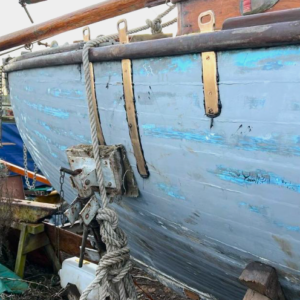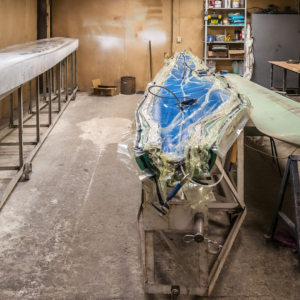Epoxy Basics: Why Is Epoxy The Best Choice For Fibreglass Boat Repairs?

Not sure whether epoxy has what it takes to fix your fibreglass boat repairs? “It’s versatile, strong, reliable – and more than a match for polyester resin”, says Hamish Cook, Technical Guru at Epoxycraft.
Fibreglass boats – like all boats – get damaged. It’s inevitable. Collisions and groundings cause everything from small nicks to serious structural damage. And longer-term problems like water osmosis, delamination and blistering can leave you frustrated and off the water too.
For many years, the automatic response to many issues was to reach for polyester resin. But as hulls have become thinner, lighter and more flexible, they’ve become harder to repair – especially with polyester resin. Step forward epoxy…
How does epoxy contribute to the longevity of fibreglass boats?
Epoxy not only repairs damages but also adds to the lifespan of fibreglass boats. Its superior bonding strength and resistance to harsh marine conditions help maintain the boat’s structural integrity for a longer period.
What makes epoxy a cost-effective solution for repairs?
While the upfront cost of epoxy might be higher than polyester resin, its durability and effectiveness make it a more cost-effective solution in the long run. Repairs made with epoxy tend to last longer, reducing the frequency and cost of future repairs.
Can epoxy be used for cosmetic repairs on fibreglass boats?
Yes, epoxy is not just for structural repairs. It can also be used for cosmetic repairs on fibreglass boats. It can fill cracks, chips, and scratches, and can be easily sanded and painted over, making it ideal for maintaining your boat’s appearance.
How does epoxy compare to other adhesives in terms of safety?
When working with boat repair materials, safety is a key concern. Epoxy, when used as directed, is a safe material for boat repair. It’s non-flammable and has low toxicity levels, making it a safer choice than many other adhesives.
What are some tips for working with epoxy on fibreglass repairs?
Working with epoxy can be easy if you know the right techniques. This section can provide tips on mixing ratios, application methods, safety precautions, and clean up procedures.
Still unsure about which product is right for you? For expert advice on product selection, email our technical team at: techinfo@wessex-resins.com

Have you subscribed to our FREE monthly newsletter? Sign up here!
Working on a project? Share it with us! Click here…



